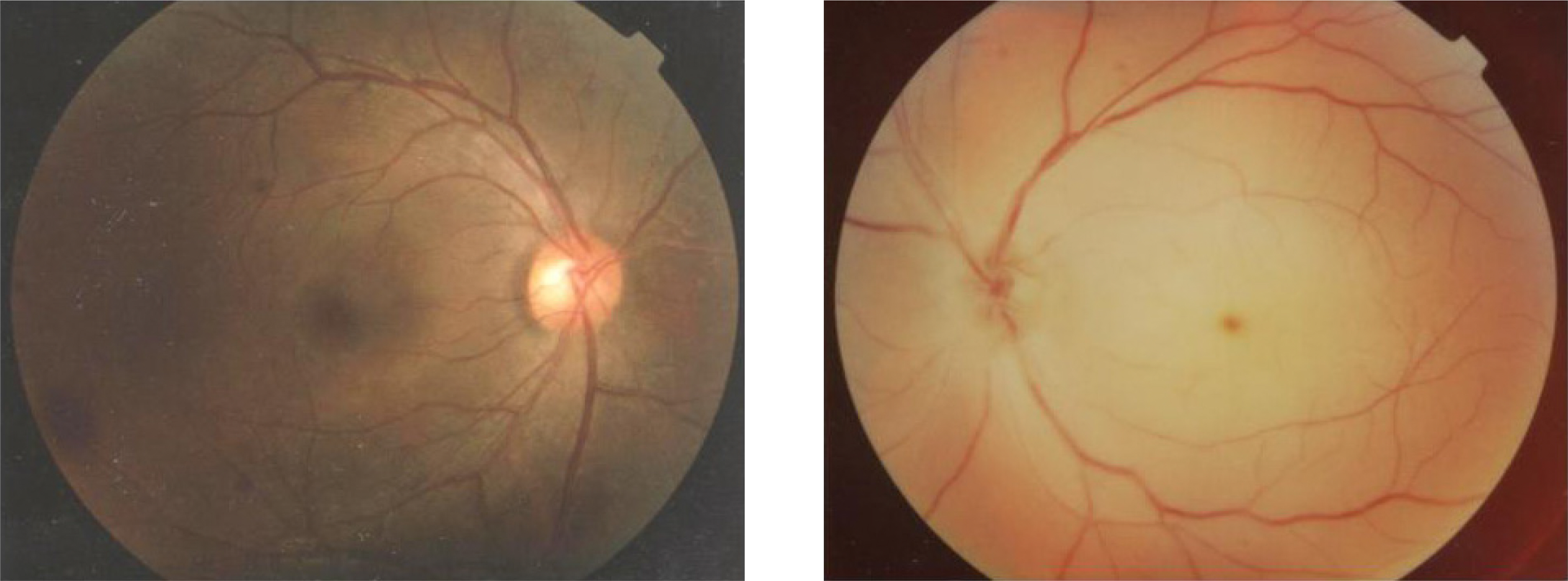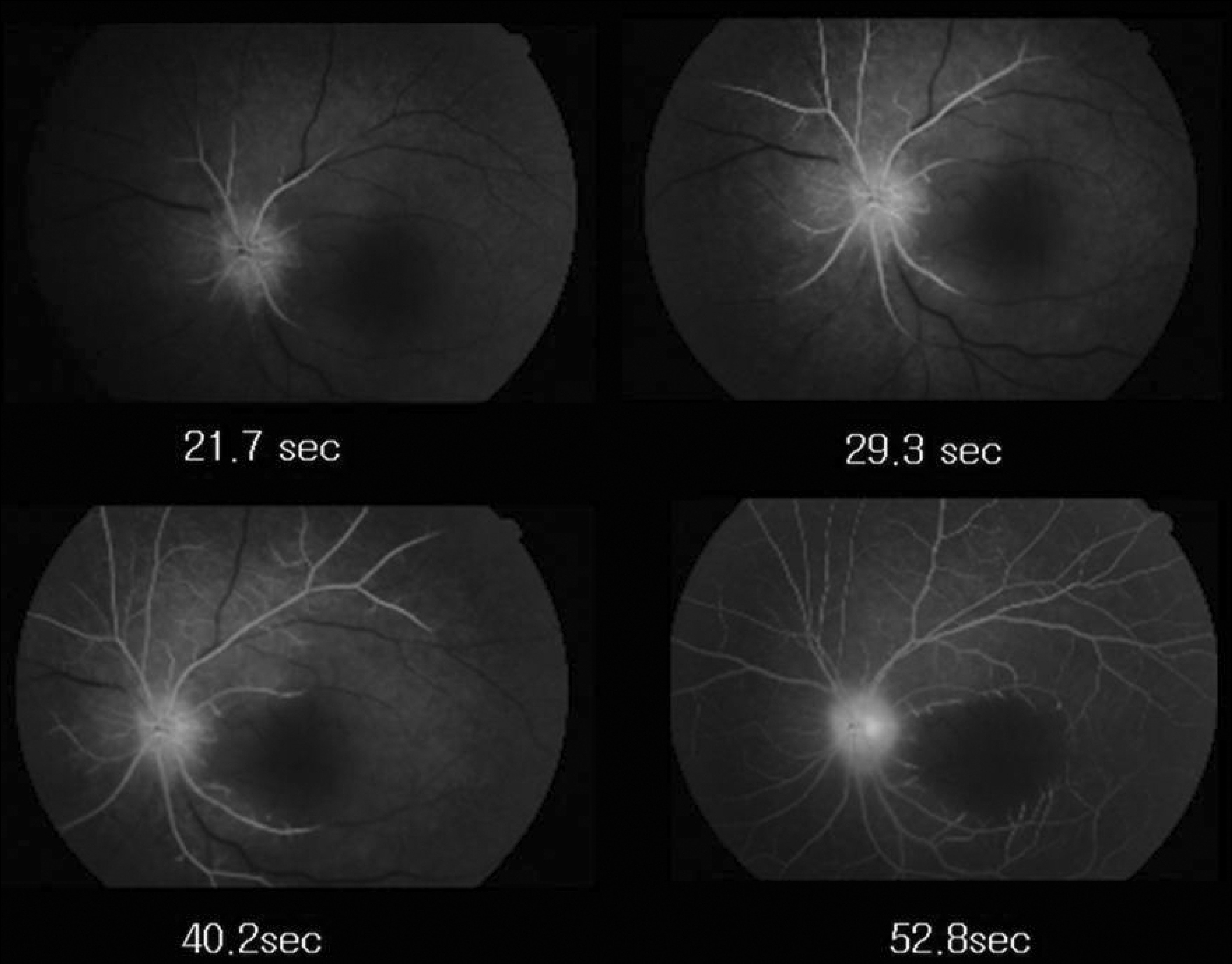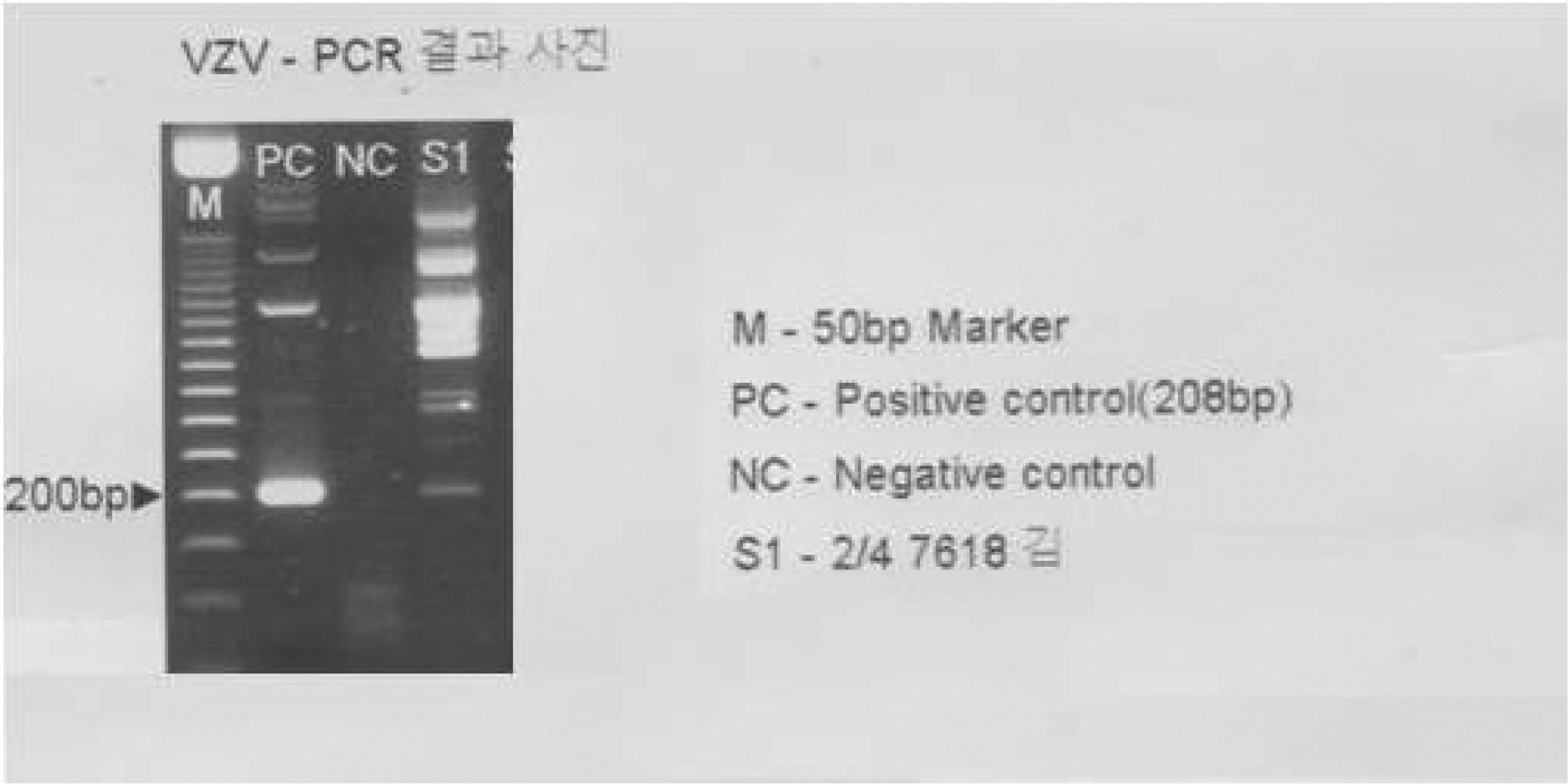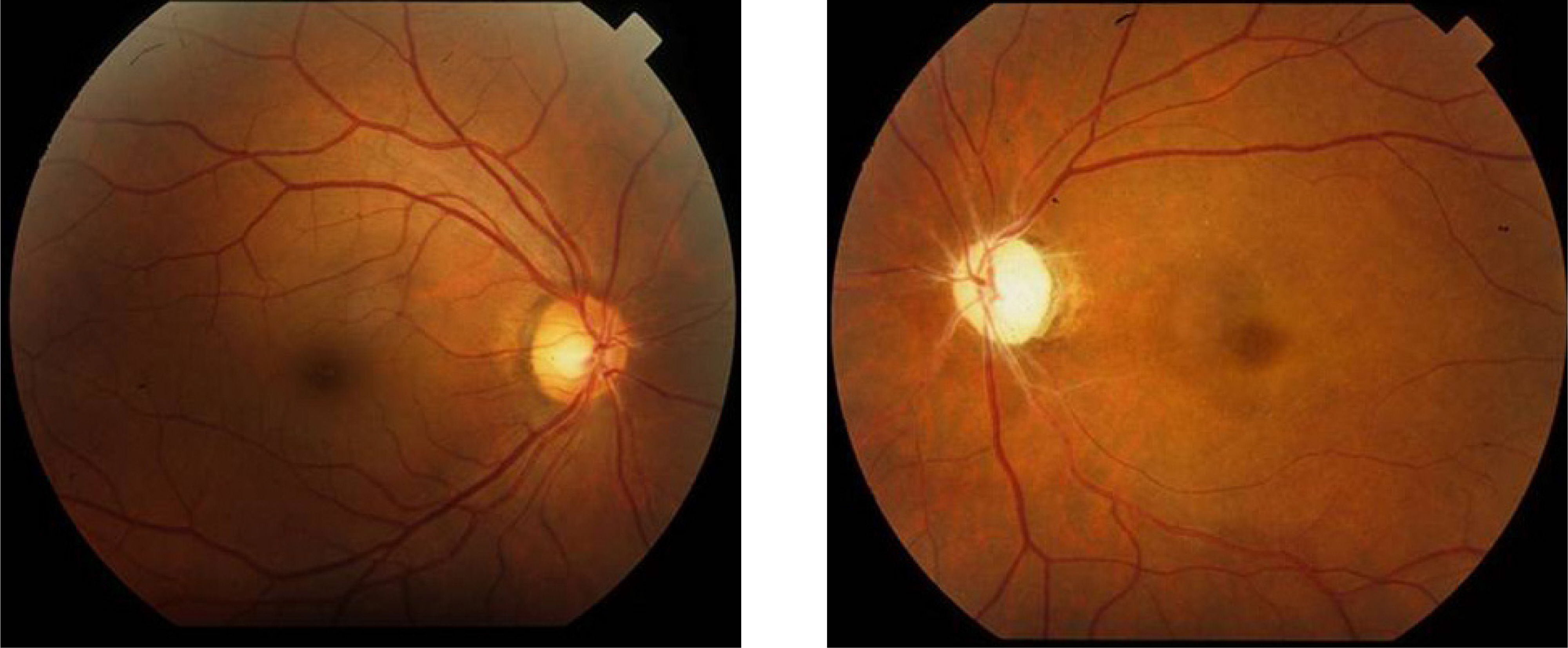J Korean Ophthalmol Soc.
2008 May;49(5):853-857. 10.3341/jkos.2008.49.5.853.
Central Retinal Artery Occlusion Associated with Chickenpox
- Affiliations
-
- 1Department of Ophthalmology, College of Medicine, Chungnam National Univercity, Deajeon, Korea. kimjy@cnu.ac.kr
- KMID: 2211719
- DOI: http://doi.org/10.3341/jkos.2008.49.5.853
Abstract
-
PURPOSE: To report a case of central retinal artery occlusion (CRAO) associated with chickenpox.
CASE SUMMARY
A 24-year-old female presenting with a history of centripetal eruption and erythema, followed by vesicle and eschar, was diagnosed with varicella and managed in a local medical clinic. Five days after the varicella eruption, she experienced decreased vision in her left eye. On initial exam visual acuity was light-sense positive in the left eye and 1.0 in the right eye; on fundus examination the patient was diagnosed with CRAO. We performed hematologic tests including thrombophilia studies, but there were no abnormal findings on routine hematologic tests, the carotid artery, or cardiovascular examinations. Antinuclear antibody, rheumatoid factor, and antiphospholipid antibody were negative. Skin biopsy and PCR results both corresponded with varicella, and the patient was diagnosed with CRAO associated with chickenpox.
MeSH Terms
-
Antibodies, Antinuclear
Antibodies, Antiphospholipid
Biopsy
Carotid Arteries
Chickenpox
Erythema
Eye
Female
Hematologic Tests
Humans
Polymerase Chain Reaction
Retinal Artery
Retinal Artery Occlusion
Rheumatoid Factor
Skin
Thrombophilia
Vision, Ocular
Visual Acuity
Young Adult
Antibodies, Antinuclear
Antibodies, Antiphospholipid
Rheumatoid Factor
Figure
Cited by 1 articles
-
A Case of Multiple Complications in Herpes Zoster Ophthalmicus
Yeong Woo Son, Jin Hyun Kim, Seung Woo Lee
J Korean Ophthalmol Soc. 2015;56(5):789-793. doi: 10.3341/jkos.2015.56.5.789.
Reference
-
References
1. Vyse AJ, Gay NJ, Hesketh LM, et al. Seroprevalence of antibody to varicella zoster virus in England and Wales in children and young adults. Epidemiol Infect. 2004; 132:1129–34.
Article2. Macleod J. Davidson's priciples and practice of medicine. 19th ed.1. Edinburgh: Churchill Livingstone;1984. p. 730.3. Duke-Elder S. System of ophthalmology. 3rd ed.15. London: Kimpton;1976. p. 167.4. Hall S, Maupin T, Seward J, et al. Second varicella infections: Are they more common than previously thought? Pediatrics. 2002; 19:1068–73.
Article5. Ostler HB, Thygeson P. The ocular manifestations of herpes zoster, varicella, infectious mononucleosis, and cytomegalovirus disease. Surv Ophthalmol. 1976; 21:148–59.
Article6. Liesegang TJ. The varicella-zoster virus: systemic and ocular features. J Am Acad Dermatol. 1984; 11:165–91.
Article7. Appel I, Frydman M, Savir H, et al. Uveitis and ophthalmoplegia complicating chickenpox. J Pediatr Ophthalmol. 1977; 14:346–8.
Article8. Chu W, Pavan-Langston D. Ocular surface manifestations of the major viruses. Int Ophthalmol Clin. 1979; 19:135–67.9. Edwards T. Ophthalmic complications of varicella. J Pediatr Ophthalmol. 1965; 2:37–40.10. Jordan DR, Noel LP, Clarke WN. Ocular involvement in varicella. Clin Pediatr. 1984; 23:434–6.
Article11. Matoba A. Ocular viral infections. Pediatr Infect Dis. 1984; 3:358–68.12. Robb R. Cataracts acquired following varicella infection. Arch Ophthalmol. 1972; 87:352–4.
Article13. Yoser SL, Forster DJ, Rao NA. Systemic viral infections and their retinal and choroidal manifestations. Surv Ophthalmol. 1993; 37:313–52.
Article14. Garweg J, Bohnke M. Varicella zoster virus is strongly associated with atypical necrotizing herpetic retinopathies. Clin Infect Dis. 1997; 24:603–8.15. Capone A Jr, Meredith TA. Central visual loss caused by chickenpox retinitis in a 2-year-old child. Am J Ophthalmol. 1992; 113:592–3.
Article16. Purvin V, Hrisomalos N, Dunn D. Varicella optic neuritis. Neurology. 1988; 38:501–3.17. Hugkulstone CE, Watt LL. Branch retinal arteriolar occlusion with chickenpox. Br J Ophthalmol. 1988; 72:78–80.
Article18. Cho NC, Han HJ. Central retinal artery occlusion after varicella. Am J Ophthalmol. 1992; 114:235–6.
Article19. Friedberg MA, Micale AJ. Monocular blindness from central retinal artery occlusion associated with chickenpox. Am J Ophthalmol. 1994; 117:117–8.
Article
- Full Text Links
- Actions
-
Cited
- CITED
-
- Close
- Share
- Similar articles
-
- A Case of Central Retinal Artery Occlusion Associated with Chickenpox
- Incomplete Central Retinal Artery Occlusion
- The Successful Treatment of a Case of Central Retinal Artery Occlusion
- Central Retinal Artery Occlusion Masquerading as Branch Retinal Artery Occlusion
- A Case of Cilioretinal Artery Occlusion Associated with Central Retinal Vein Occlusion





